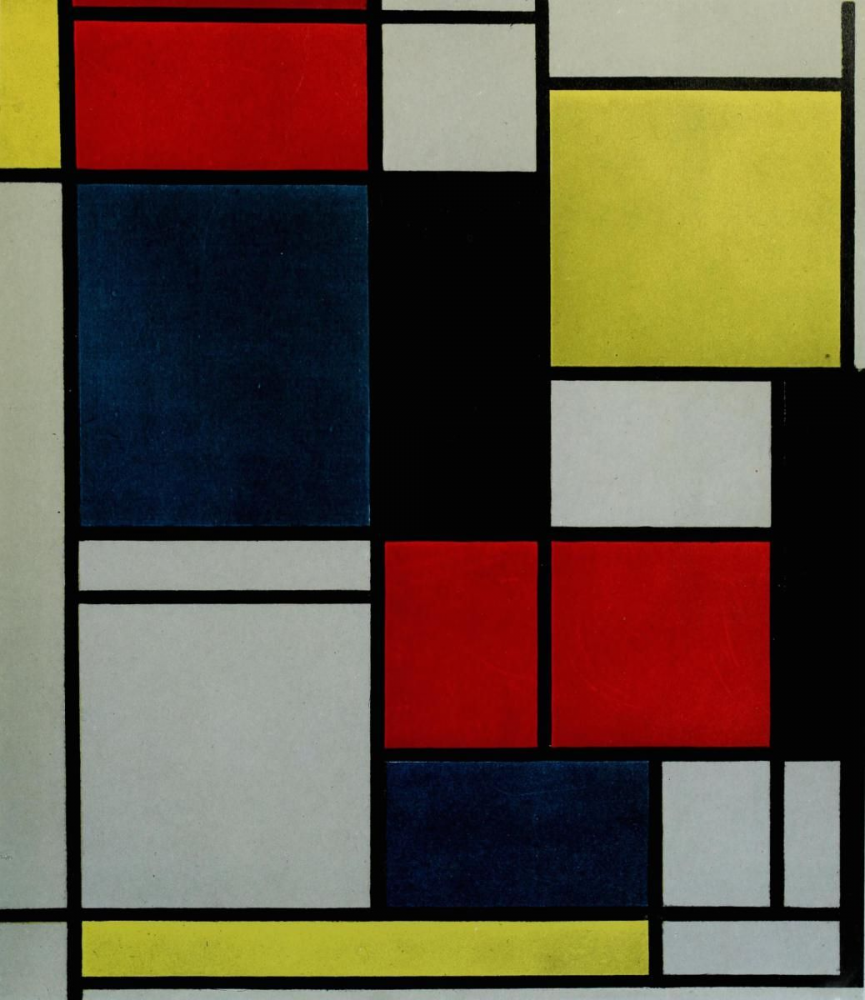落花风
洛阳城东桃李花,飞来飞去落谁家?Piet Mondrian: Tableau No. II

When I look at Piet Mondrian's "Tableau No. II," I spontaneously liken it to the Lego pieces my son plays with. These simplified blocks provide children worldwide with hours of entertainment. I believe "Tableau No. II" and Lego pieces share similar ideas in three ways: 1. Our world is becoming increasingly complex, necessitating simple yet enjoyable activities. 2. Regardless of an object's complexity, you can still use simple geometric shapes to construct it. 3. Rather than destroying, we construct.
Mondrian's De Stijl movement was influenced by Cubism, and he further studied Analytical Cubism. De Stijl and Cubism share a similar process: taking organic objects like trees and simplifying them into basic, puzzle-like, non-representational forms. De Stijl diverged from Cubism by greatly simplifying it and imbuing its work with further purpose. To me, his meticulous approach resembles that of a surgical doctor performing an operation or a biologist examining bacterial forms under a microscope. Mondrian sought to diagnose the underlying ailments of a society torn apart by wars. More than that, he aimed to find a cure by uniting people through his art. His goals and methods are reflected in his work. The red rectangles in his compositions represent violent forces, unavoidable but capable of being tamed by counterbalancing forces—utilizing opposite colors and gridlock shapes.
Despite his noble intentions, I'm unsure of how much his efforts would aid the chaotic world. Fascist leaders and militarists were likely more interested in developing powerful weapons than in pondering the subtle meanings of his work.




